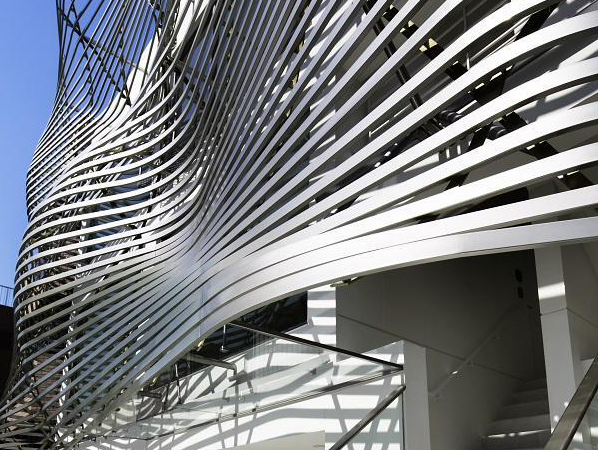Stainless steel (
stainless steel seamless pipe) is currently used in many industries. In addition to traditional industries and marine construction, the use of household appliances is also increasing. Although stainless steel is more expensive than
mild steel pipe, its superior properties result in longer service life and lower cycle costs. So, the larger upfront cost pays off in the long run.
We know that steel is an alloy of iron and carbon, with a maximum carbon content of 2.1%. Stainless steels are a group of steels that are made resistant to corrosion by the addition of alloying elements. Its distinguishing feature is its high content of chromium. Stainless steel contains at least 10.5% chromium, which increases its corrosion resistance and strength.
When exposed to air, the chromium in the alloy forms a passivating layer as it oxidizes. This layer acts as a barrier against further corrosion, essentially making the alloy rust-proof. This mechanism allows for a spotless appearance for extended periods of time under normal working conditions.

Benefits of stainless steel:
As demand increases, production increases, making it more affordable than ever. Increased demand has resulted in the availability of standard and non-standard sizes. Additionally, there are a variety of stainless steel finishes to choose from. In addition to polished finishes, a range of patterned and colored surfaces are also available. This makes it possible to find an option that suits your needs. Stainless steel is also 100% recyclable. In fact, half of stainless steel production comes from scrap metal. This makes it a relatively environmentally friendly material.
Applications of stainless steel:
Stainless steel is an extremely versatile material. It is preferred where both the properties of steel and the corrosion resistance are required. Its first use was in tableware because of its superior corrosion resistance. Next, the way to the chemical industry was opened. Today, we can find stainless steel almost everywhere.
Applications for stainless steel vary by industry. For example, uses include making tiny parts for watches. Meanwhile, large panels with a certain surface finish may cover entire buildings. Some industries that widely use stainless steel: food and catering, chemicals, medical device manufacturing, building and construction, household appliances, offshore and shipbuilding, automobile manufacturing, energy and industry, etc.
Types of stainless steel:
Stainless steel is available in a variety of grades and finishes, depending on the environment the metal is expected to withstand. According to the microstructure, they can be divided into four major categories.
1. Austenitic stainless steel
Austenitic stainless steel has austenite as the main microstructure. Austenite is a solid solution of iron and carbon that forms above a critical temperature of 723°C. This stainless steel series exhibits high toughness and impressive high temperature resistance.
70% of all stainless steels are austenitic. It contains at least 16% chromium and 6% nickel.
Austenite stabilizers are elements added to promote the formation of the austenite microstructure. This stainless steel grade is a non-magnetic metal and cannot be hardened by heat treatment. Corrosion resistance can be modified according to the usage environment.
2. Ferritic stainless steel
Ferritic steels usually contain only chromium as an alloying element. Chromium content ranges from 10.5 to 18%. They have general corrosion resistance and poor manufacturing characteristics. Heat treatment methods also do not help harden the metal.
They generally have better engineering capabilities than austenitic steels. Unlike austenitic stainless steels, they are magnetic. They also have good resistance to stress corrosion, which reduces wear on corrosive materials.
3. Duplex stainless steel
Duplex stainless steels are a mixture of austenitic and ferritic stainless steels. Therefore, it has the properties of its two components. It has a high chromium and low nickel concentration. Duplex stainless steels have unique advantages due to their high tensile strength and good weldability.
It shows good stress corrosion resistance, but not as good as ferritic grades. It is tougher than ferritic grades, but less than austenitic grades.
4. Martensitic stainless steel:
This type of stainless steel consists of high carbon and low chromium content. Like ferritic grades, it is magnetic. It does exhibit poor weldability compared to other grades, but it has higher hardenability and can be heat treated to improve performance.
Martensitic stainless steels have lower corrosion resistance than austenitic and ferritic stainless steels with the same chromium and alloy content.
Stainless steel grade:
There are hundreds of grades of stainless steel on the market today. It's important to choose the right one for your application, as their properties can be quite different from each other. The AISI (American Iron and Steel Institute) stainless steel nomenclature system is still used in the industry. The numbering system uses three digits beginning with 2, 3 or 4.
200 series
This series is used for austenitic steel grades containing manganese. These chrome-manganese steels have a low nickel content (less than 5%). The 200 series can be used in: washing machines, knives, food and beverage equipment, automotive industry, indoor equipment, etc.
300 series
This series is used to designate austenitic stainless steels alloyed with carbon, nickel and molybdenum. Molybdenum is added to improve corrosion resistance in acidic environments, while nickel increases ductility.
AISI 304 stainless steel and
316 stainless steel are the most common grades in this family. AISI 304 is also commonly referred to as 18/8 steel because it contains 18% chromium and 8% nickel. 300 series stainless steel applications include: food and beverage industry, automotive industry, structures in critical environments, medical devices, jewelry, etc.
400 series
Ferritic and martensitic alloys make up this family of stainless steels. These grades can be used for heat treatment. Offers a good combination of strength and high wear resistance. But the corrosion resistance is lower than the 300 series. Applications for the 400 Series include: agricultural equipment, motor shafts, gas turbine parts, and more.


